The Vital Role of Skid Steer Bobcat Training on Ontario Construction Sites for OHSA Compliance:
Ontario’s construction industry is a dynamic and ever-evolving sector where innovation and efficiency are essential. Skid steer Bobcats are among the versatile machines that have become indispensable for various tasks on construction sites, from excavation and material handling to landscaping and grading. However, with the power and utility they offer, skid steer Bobcats also bring potential hazards. To ensure safety, compliance with provincial regulations, and maximize productivity, it is crucial for workers to receive comprehensive skid steer Bobcat training. In this article, we will explore the importance of skid steer Bobcat training on Ontario construction sites to align with the Occupational Health and Safety Act (OHSA) and foster a culture of safety.
Understanding Skid Steer Bobcats
Before delving into the significance of training, let’s have a clear understanding of skid steer Bobcats:
- Skid Steer Loaders: Skid steer loaders, often referred to as Bobcats (a popular brand name), are compact construction machines equipped with a bucket or attachment at the front. They are known for their maneuverability, versatility, and ability to navigate tight spaces. Skid steer loaders are commonly used in construction, landscaping, agriculture, and various other industries.
- Attachments: Skid steer loaders can be fitted with a wide range of attachments, including buckets, forks, augers, and hydraulic breakers, making them adaptable for various tasks such as digging, lifting, and trenching.
Importance of Skid Steer Bobcat Training
- Safety First:
The foremost reason for skid steer Bobcat training is safety. Skid steer loaders can pose significant risks to operators and those working in their vicinity if not handled correctly. Training equips workers with the knowledge and skills needed to operate these machines safely, reducing the risk of accidents and injuries.
- Compliance with OHSA:
The Occupational Health and Safety Act (OHSA) in Ontario places a legal obligation on employers to provide workers with proper training, information, and supervision. Failure to comply with these regulations can lead to fines, penalties, and legal liabilities. Skid steer Bobcat training ensures that employers meet OHSA requirements.
- Hazard Identification:
Training programs educate workers on the potential hazards associated with skid steer Bobcat operation. This includes understanding the risks of rollovers, entanglement, falling objects, and more. Workers learn how to recognize and mitigate these hazards effectively.
- Safe Operating Procedures:
Skid steer Bobcat training covers safe operating procedures, including pre-operational inspections, start-up and shut-down routines, and best practices for controlling the machine while performing tasks. Following these procedures is crucial for preventing accidents.
- Equipment Familiarization:
Workers receive in-depth knowledge about the specific skid steer Bobcat model they will operate, including its controls, functions, and limitations. This familiarity enhances their ability to operate the machine efficiently and safely.
- Emergency Response:
In the event of an emergency or equipment malfunction, trained operators are better equipped to respond quickly and effectively, reducing the potential for accidents to escalate.
- Reduced Accidents:
Accidents involving skid steer Bobcats can result in severe injuries and fatalities. Proper training significantly reduces the risk of such accidents, enhancing workplace safety and morale.
- Improved Efficiency:
Skilled operators are more efficient and productive when using skid steer Bobcats. They can complete tasks more quickly and accurately, benefiting both the employer and the project’s overall timeline.
- Cost Savings:
Accidents involving skid steer Bobcats can lead to costly medical expenses, legal fees, insurance claims, and project delays. By investing in training, employers can potentially save significant costs associated with accidents.
Key Components of Skid Steer Bobcat Training
Effective skid steer Bobcat training programs should cover a range of essential components:
- Theoretical Knowledge: Understanding the principles of skid steer operation, safety guidelines, and OHSA regulations.
- Equipment Familiarization: In-depth knowledge of the specific skid steer Bobcat model, including its controls, functions, and safety features.
- Pre-Operational Inspections: Learning how to perform thorough inspections before starting the machine to ensure it is in good working condition.
- Safe Operating Procedures: Best practices for operating skid steer Bobcats safely, including loading and unloading attachments, navigating challenging terrain, and managing loads.
- Hazard Identification: Recognizing potential hazards and implementing control measures to mitigate risks.
- Emergency Response: Training on how to respond to emergencies, including rollovers, equipment malfunctions, and first aid procedures.
- Practical Skills: Hands-on training and practical exercises to develop proficiency in operating skid steer Bobcats safely and efficiently.
- Maintenance: Understanding routine maintenance and inspection tasks to keep the machine in optimal condition.
In the fast-paced world of construction and heavy machinery operation, safety should always be the top priority. Skid steer Bobcats are valuable assets on Ontario construction sites, but their safe operation requires skilled and trained operators. Compliance with the Occupational Health and Safety Act (OHSA) is not just a legal obligation; it is a commitment to the well-being of workers and the success of construction projects.
Investing in comprehensive skid steer Bobcat training is an investment in safety, efficiency, and cost-effectiveness. By ensuring that workers are equipped with the knowledge and skills to operate these machines safely and in compliance with OHSA regulations, employers can create a culture of safety, reduce accidents, and contribute to a safer and more productive construction industry in Ontario.
Click here to book an onsite Skid Steer Bobcat Training session.
Click here to read more about and construction requirements as per OHSA regulations.


